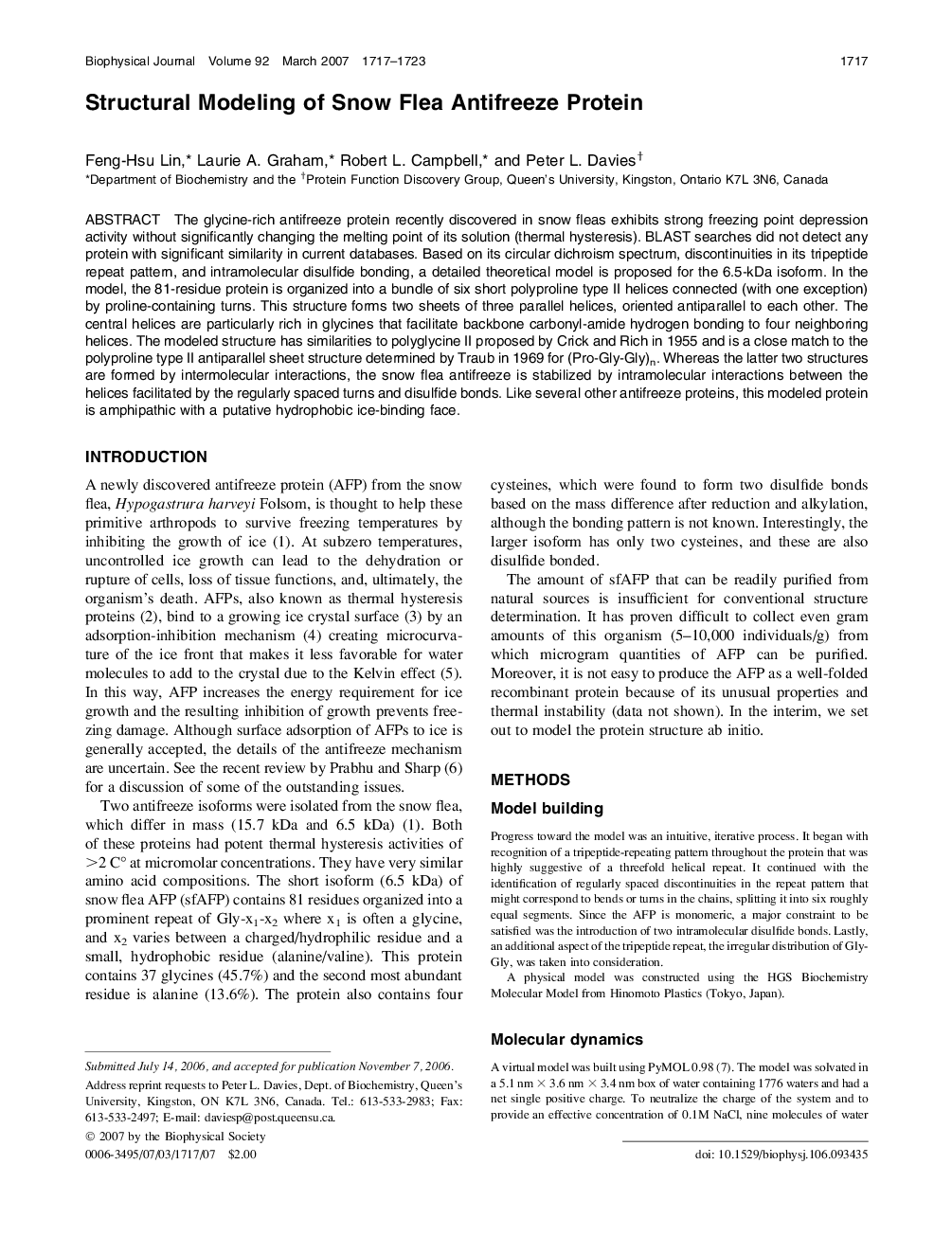| کد مقاله | کد نشریه | سال انتشار | مقاله انگلیسی | نسخه تمام متن |
|---|---|---|---|---|
| 1958428 | 1057911 | 2007 | 7 صفحه PDF | دانلود رایگان |

The glycine-rich antifreeze protein recently discovered in snow fleas exhibits strong freezing point depression activity without significantly changing the melting point of its solution (thermal hysteresis). BLAST searches did not detect any protein with significant similarity in current databases. Based on its circular dichroism spectrum, discontinuities in its tripeptide repeat pattern, and intramolecular disulfide bonding, a detailed theoretical model is proposed for the 6.5-kDa isoform. In the model, the 81-residue protein is organized into a bundle of six short polyproline type II helices connected (with one exception) by proline-containing turns. This structure forms two sheets of three parallel helices, oriented antiparallel to each other. The central helices are particularly rich in glycines that facilitate backbone carbonyl-amide hydrogen bonding to four neighboring helices. The modeled structure has similarities to polyglycine II proposed by Crick and Rich in 1955 and is a close match to the polyproline type II antiparallel sheet structure determined by Traub in 1969 for (Pro-Gly-Gly)n. Whereas the latter two structures are formed by intermolecular interactions, the snow flea antifreeze is stabilized by intramolecular interactions between the helices facilitated by the regularly spaced turns and disulfide bonds. Like several other antifreeze proteins, this modeled protein is amphipathic with a putative hydrophobic ice-binding face.
Journal: - Volume 92, Issue 5, 1 March 2007, Pages 1717–1723